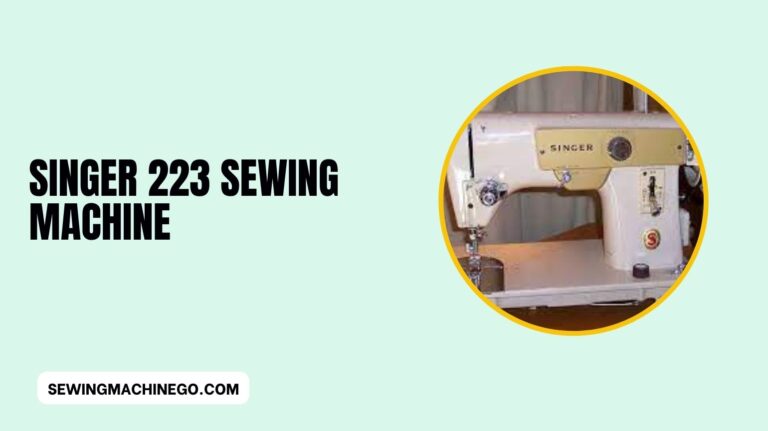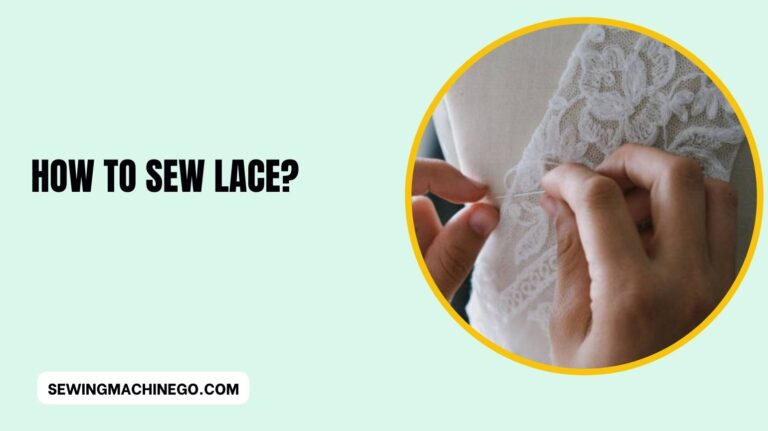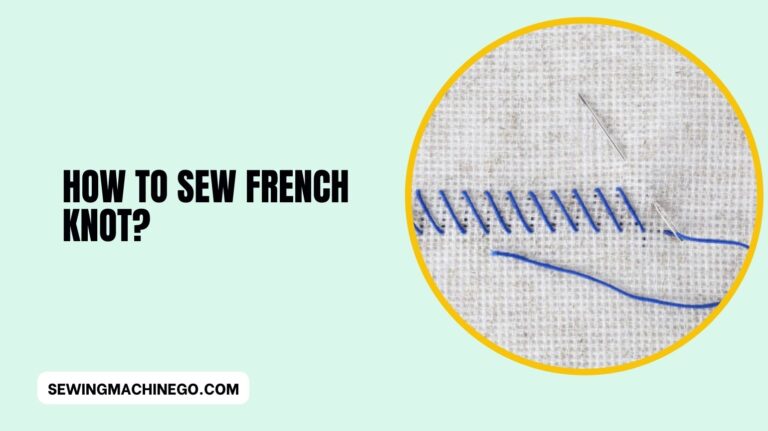How Sew Curtains?
Sewing curtains is a rewarding and budget-friendly way to enhance your living space. How Sew Curtains? In this comprehensive guide,
we’ll take you through the step-by-step process of creating customized curtains that reflect your style and personality.
Whether you’re a sewing novice or an experienced crafter, this article will equip you with the knowledge and inspiration to tackle your curtain project with confidence.

How Sew Curtains?
Sewing your own curtains may seem like a daunting task, but the benefits far outweigh the challenges.
Custom curtains allow you to express your creativity, save money, and tailor the window treatment precisely to your preferences.
Let’s dive into the exciting world of curtain sewing and unlock the secrets to transforming your living space.
Gathering Materials
Before you embark on your sewing journey, it’s essential to gather the right materials. Here’s a quick checklist to ensure you have everything you need:
- Fabric of your choice
- Measuring tape
- Sharp scissors
- Sewing machine
- Thread in matching color
- Pins and needles
- Curtain rod
- Embellishments (optional)
Choosing Fabric
The fabric you choose sets the tone for your curtains. Consider factors like durability, light filtration, and aesthetic appeal.
Whether you opt for light and airy or thick and insulating, the fabric will dictate the overall look and functionality of your curtains.
Measuring and Cutting
When measuring and cutting fabric for curtains, precision is key to achieving a polished final look. Start by measuring the window’s width and desired curtain length, adding extra inches for hems and headers.
Use a measuring tape to mark these measurements on the fabric, ensuring straight lines and even edges.
For accuracy, use fabric weights or pins to secure the fabric before cutting along the marked lines with sharp fabric scissors or a rotary cutter.
Double-check measurements before cutting to avoid mistakes, and remember to account for any pattern repeats or design considerations in the fabric.
Sewing Techniques
For beginners, basic sewing techniques such as straight stitches and hems are essential. As you gain confidence, experiment with more advanced stitches and decorative elements to elevate the visual appeal of your curtains.
When sewing curtains, several techniques can ensure a polished finish and functional design.
- Measuring and Cutting: Accurate measurements are key. Measure the window area carefully and add allowances for hems and headers. Cut the fabric precisely to your required dimensions.
- Hems: Double-fold hems provide a neat edge. Fold the fabric twice to conceal raw edges and stitch it securely. Ironing the folds beforehand helps in creating crisp hems.
- Headers and Rod Pockets: Headers can vary from simple hems to more decorative options like pleats or gathers. Rod pockets should accommodate the curtain rod’s diameter, ensuring a smooth glide.
- Seams: Strong, durable seams are essential. Use appropriate stitching techniques and reinforce stress points, especially if the curtains are heavy or long.
- Lining: Consider using a lining fabric to add weight, improve insulation, and protect the curtain fabric. Attaching the lining correctly ensures a professional look from both sides.
- Finishing Touches: Press the curtains at each stage to ensure a smooth, wrinkle-free finish. Adding weights at the hem or corners can help curtains hang evenly.
Adding Embellishments
Take your curtains to the next level by adding embellishments. From playful trims to sophisticated tassels,
there are endless ways to personalize your creation. Let your creativity shine as you enhance the aesthetic appeal of your curtains.
Installing Curtain Rods
Installing curtain rods is a fundamental step in hanging curtains. Before sewing your curtains, it’s essential to measure the window width and height to determine the appropriate rod length and position.
Once you’ve installed the rods securely using appropriate hardware and ensuring they’re level, you can move on to sewing the curtains.
Consider the fabric type, desired length, and header style (like rod pocket, tab top, or grommets) when sewing the curtains to ensure they hang beautifully from the installed rods.
Be precise in your measurements and sewing to achieve a polished look once the curtains are hung on the rods.
Common Mistakes to Avoid
Avoiding common pitfalls in curtain sewing is crucial for a successful project. Learn about potential mistakes and how to troubleshoot them, saving you time and frustration.
Embarking on a curtain-sewing project is exciting, but steer clear of these common mistakes for a seamless experience:
1. Ignoring Accurate Measurements
- Mistake: Skipping precise measurements.
- Solution: Measure twice, and cut once. Accurate measurements are the foundation of well-fitted curtains.
2. Choosing the Wrong Fabric
- Mistake: Selecting unsuitable fabric.
- Solution: Consider durability, light filtration, and aesthetic appeal when choosing your fabric.
3. Neglecting Straight Seams
- Mistake: Overlooking straight seams.
- Solution: Practice straight stitches on scrap fabric, ensuring a polished finish.
4. Skipping Ironing Before Hanging
- Mistake: Hanging wrinkled curtains.
- Solution: Iron curtains before hanging to achieve a smooth, professional look.
5. Inconsistent Stitching
- Mistake: Uneven or inconsistent stitches.
- Solution: Practice stitching on scrap fabric, adjusting the sewing machine’s tension as needed.
6. Poorly Installed Curtain Rods
- Mistake: Improperly installed rods.
- Solution: Use a level, follow installation instructions, and ensure proper support for the rods.
7. Ignoring Fabric Snags
- Mistake: Overlooking fabric snags during sewing.
- Solution: Check the sewing machine for rough edges and address them. Use a suitable needle for the fabric.
8. Crooked Seams
- Mistake: Seams appear crooked.
- Solution: Pay close attention while sewing, ensuring proper alignment of the fabric.
9. Difficulty Adding Embellishments
- Mistake: Struggling with decorative elements.
- Solution: Practice on scrap fabric, use pins for placement, and secure embellishments before sewing.
10. Ignoring Thread Tension
- Mistake: Neglecting thread tension.
- Solution: Adjust tension settings on the sewing machine, consulting the manual for guidance.
11. Uneven Curtain Lengths
- Mistake: Curtains of different lengths.
- Solution: Measure each curtain individually, double-check measurements, and trim as needed for uniformity.
12. Fabric Fraying
- Mistake: Fabric edges fraying.
- Solution: Use pinking shears for fraying-prone fabric or consider serging or zigzag stitching along raw edges.
Maintenance Tips
Maintaining sewn curtains can preserve their beauty and functionality over time. Regularly vacuum or shake curtains to remove dust and debris.
For machine-washable fabrics, follow manufacturer instructions for gentle cleaning. Handwashing delicate or intricate curtains might be preferable.
Avoid harsh detergents and opt for mild ones to prevent damage or color fading. When ironing, use low heat and a pressing cloth to avoid scorching or shiny spots.
Periodically check seams and hems for loose threads, repairing them promptly to prevent unraveling.
Lastly, rotate curtains occasionally to ensure even sun exposure and minimize fading. These maintenance practices will prolong the life and allure of your sewn curtains.
Budget-Friendly Options
Sewing your curtains doesn’t have to break the bank. Explore budget-friendly options for sourcing materials without compromising on quality. Learn where to find affordable fabrics and tools for your project.
Inspiring Design Ideas
Sewing curtains opens a world of design possibilities to transform your space. Consider creating floor-length drapes with a patterned fabric to add depth and character to a room.
Opt for sheer fabrics to invite natural light while maintaining privacy or use blackout material for a restful ambiance in bedrooms.
Experiment with various header styles like rod pockets, grommets, or pleats to complement your décor. Add trims, borders, or tie-backs for a personalized touch.
Don’t shy away from mixing fabrics or layering to create unique, textured looks. Sewing curtains allows you to infuse your space with style, functionality, and a touch of your personality.
Environmental Benefits
Sewing curtains offers a range of environmental benefits that contribute to sustainability. Crafting your curtains allows for the use of eco-friendly fabrics, such as organic cotton, hemp, or recycled materials, reducing the environmental impact of production.
Additionally, by making curtains tailored to your windows, you minimize fabric waste compared to buying pre-made ones.
Furthermore, sewing your curtains enables you to control the entire process, from selecting materials to ensuring quality stitching, leading to longer-lasting curtains that reduce the frequency of replacements.
Ultimately, the act of sewing curtains not only adds a personal touch to your space but also promotes eco-conscious choices, supporting a more sustainable lifestyle.
Personal Stories
Gain inspiration from real individuals who have successfully sewn their curtains. Read personal stories of triumphs and challenges, building your confidence to embark on your curtain-sewing journey.
Troubleshooting Guide
Sewing curtains can occasionally present challenges, but fear not! Here’s a quick troubleshooting guide to help you navigate common issues:
1. Uneven Hemlines
- Problem: The hemlines are not even.
- Solution: Before cutting, measure twice to ensure accuracy. If already cut, carefully re-measure and trim as needed.
2. Wrinkles After Hanging
- Problem: Curtains are wrinkled after hanging.
- Solution: Iron the curtains before hanging. Choose wrinkle-resistant fabric to minimize future wrinkles.
3. Uneven Stitching
- Problem: Stitches appear uneven or inconsistent.
- Solution: Practice stitching on scrap fabric before starting. Ensure proper tension on the sewing machine and maintain a steady pace.
4. Difficulty Installing Rods
- Problem: Struggling to install curtain rods.
- Solution: Use a level to ensure the rods are straight. Follow installation instructions carefully and use appropriate anchors for support.
5. Fabric Snags
- Problem: Fabric snags during sewing.
- Solution: Check your sewing machine for any rough edges. Smooth out any rough spots on the machine or use a needle suitable for the fabric.
6. Crooked Seams
- Problem: Seams look crooked or uneven.
- Solution: Pay close attention while sewing. Ensure the fabric is aligned properly, and make adjustments as needed during the sewing process.
7. Difficulty Adding Embellishments
- Problem: Trouble adding decorative elements.
- Solution: Practice on scrap fabric first. Use pins to secure embellishments before sewing to ensure proper placement.
8. Curtain Length Discrepancy
- Problem: Curtains are not the same length.
- Solution: Measure each curtain individually, and double-check measurements before cutting. Trim as necessary to achieve uniform length.
9. Thread Tension Issues
- Problem: Uneven tension in the thread.
- Solution: Adjust the tension settings on your sewing machine. Consult your machine’s manual for guidance.
10. Fabric Fraying
- Problem: Fabric edges are fraying.
- Solution: Use pinking shears for fabric prone to fraying. Consider serging or zigzag stitching along raw edges for added durability.
People also ask
Can a beginner sew curtains?
Absolutely! Sewing curtains is an ideal project for beginners. With simple straight stitches and basic measurements, you can create beautiful and functional window treatments.
Start with easy-to-handle fabrics, follow a straightforward pattern, and take your time.
As you gain confidence, you can explore more advanced techniques and experiment with personalized designs.
Don’t be intimidated – embrace the learning process, and soon you’ll have curtains crafted with your own hands, adding a personal touch to your living space.
Is it worth it to sew your own curtains?
Sewing your own curtains is worth it for several reasons.
It allows for personalized designs that reflect your style, saves money compared to store-bought options, and provides a sense of accomplishment.
You have control over fabric choice, size, and embellishments, resulting in unique window treatments tailored to your preferences.
Additionally, the satisfaction of creating something functional and beautiful for your home is a rewarding experience that makes the effort truly worthwhile.
Are curtains difficult to sew?
Curtains can be sewn by beginners with basic sewing skills. While more intricate designs may require advanced techniques, simple curtains involve straight stitches and basic measurements.
With practice, you’ll gain confidence, making the process less challenging. Start with uncomplicated projects, and as your skills develop, you can explore more complex curtain designs.
How to make curtains step by step?
Here’s a brief step-by-step guide on how to make curtains:
Gather Materials:
Fabric of your choice
Measuring tape
Scissors
Sewing machine
Thread
Pins
Measure Windows:
Measure the width and length of your window for accurate sizing.
Cut Fabric:
Cut the fabric according to your measurements, leaving room for hems and folds.
Hem Edges:
Fold and hem the edges to prevent fraying.
Sew Side Seams:
Sew the side seams using straight stitches.
Add Embellishments (Optional):
Enhance your curtains with trims or other decorative elements if desired.
Install Curtain Rods:
Select and install curtain rods at the appropriate height.
Hang Curtains:
Hang your beautifully crafted curtains and adjust them as needed.
Conclusion
In conclusion, sewing curtains is a rewarding project that combines functionality with creativity. By carefully choosing the right fabrics, measurements, and sewing techniques, you can transform simple fabric into stunning window treatments.
Remember to consider the style, purpose, and aesthetic of the space, ensuring your curtains not only enhance the room but also reflect your personal touch.
With attention to detail and precision in stitching, sewing curtains becomes an enjoyable endeavor that brings both beauty and practicality into your home.

Hi, I am Alice, and I am your perfect guide to the world of sewing machines. With over 10 years of experience in the sewing industry, I am passionate about sharing my knowledge and expertise to help you make the most of your sewing journey. about me






